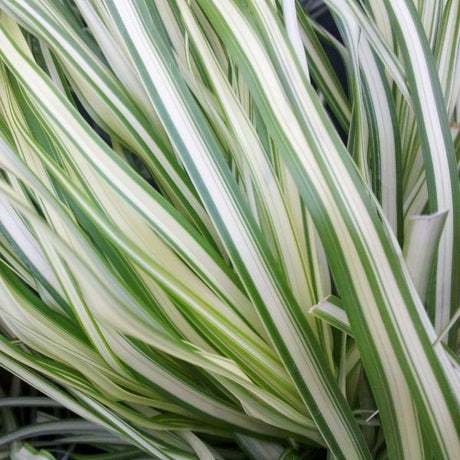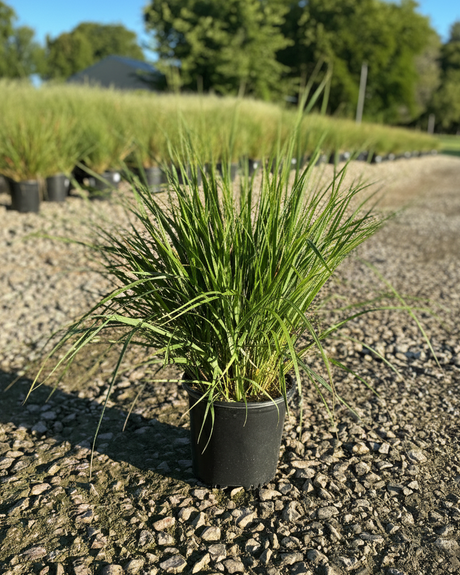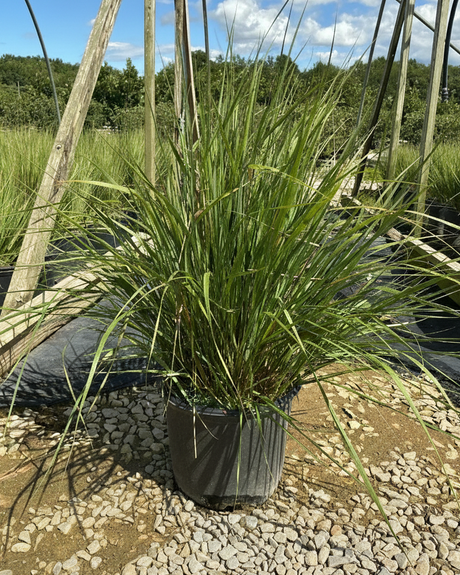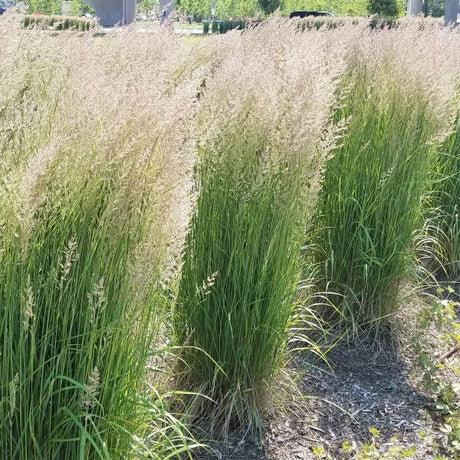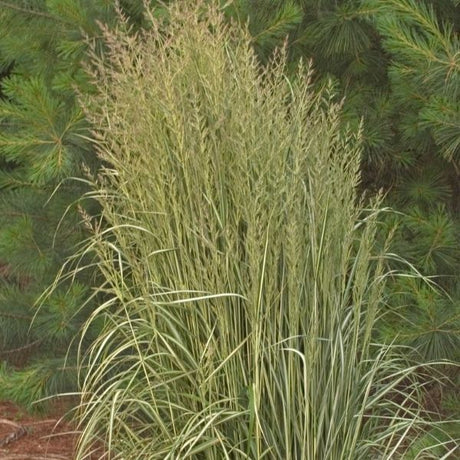Lightning Strike® Feather Reed Grass
Calamagrostis x acutiflora 'Lightning Strike'
Regular price $6780Unit price /Unavailable- Up to 17% off
Karl Foerster Feather Reed Grass
Calamagrostis x acutiflora 'Karl Foerster'
Sale price From $3317 Regular price $3933Unit price /Unavailable Calamagrostis x acutiflora 'Avalanche'
Regular price $3469Unit price /Unavailable
Feather Reed Grasses (Calamagrostis) are graceful varieties of Ornamental Grasses with stunning vertical growth and feathery stalks that float above fine-textured foliage. These are hardy, adaptable, and incredibly low-maintenance clump-forming Ornamental Grass that add texture, motion, and airy finery to the landscape!
A cross of two species native to Europe and Asia, Feather Reed Grasses, or just Reed Grasses are part of a 250-strong family. These Grasses usually show their green foliage in early spring and flowering occurs in June or July. Then, autumn arrives the feathery plume-like flowers change color and can persist well into the winter!
Deer seldom bother these perennials, though Feather Reed Grasses are adored by wildlife, providing sheltering and feasting on their seeds.
Some Great Varieties of Feather Reed Grass:
Karl Foerster
Vertical fountains of fine textured leaves and stems, this cool-season Grass features buff plumes that can grow up to 5 feet tall but only 2 feet wide.
Overdam Feather Reed
One of the smaller Calamagrostis, this upright white and green striped cool-season grass with variegated leaves, Overdam is a dense growing ornamental that shoots up golden seed pods in the fall.
Korean Feather Reed Grass
Especially showy plumes with yellow and tan fall colors, this warm-season Grass is great for naturalizing and erosion control. The upright growth resists flattening out until the heavy winter snows move in.

Where Does Feather Reed Grass Grow Best?
Any of these low-maintenance Ornamental Grasses are outstanding when planted in mass plantings or as an accent plant. These versatile selections look great in the garden border, as an effective background for perennial beds, massed together in perfect military precision, or used in long, natural drifts. Providing great texture, Feather Reed Grass is a striking addition to any yard all summer, fall, and winter!
These Grasses are used around water gardens, in borders, for erosion control, as a specimen, or use as a backdrop for perennials. Feather Reed Grasses will add a new architectural dimension wherever they are planted! And why not plant that single Feather Reed in a large ornamental container? You'll easily elevate the look and inject your personal style through your design choices.
These Grasses can also be drought tolerant once established and very popular in low water, water-wise, and xeriscape gardens.
Does Feather Reed Grass Spread?
Feather Reed Grasses form tidy clumps and the seed won't germinate because they are a hybrid between 2 species so they are usually divided into smaller clumps. Nature Hills uses Plant Sentry™ to ensure that you are not able to purchase any plants that are prohibited by your state because it's an invasive species or to prevent insects or diseases from being introduced to any area where it is restricted.
Feather Reed Perennial Grass Care

These Grasses provide year-round interest and only need maintenance a couple of times per year. Feather Reed Grasses tolerate a variety of growing conditions, from full sun to part shade and wet to dry conditions.
Cool-season and warm-season grasses make up this family - Cool-season grasses jump out of the ground early in the spring but can suffer once the hot summer sun kicks in. Warm-season grasses are slower to get going in the spring but thrive once the summer heat kicks in!
Tolerating some wetter soil and higher than average moisture, Feather Reed Grasses does not like to dry out. These fibrous root systems do need well-draining soil and cannot sit in water for long periods of time. Tolerating some moister soil and higher than average moisture, Feather Reed Grasses does not like to dry out. For best results, give this large clumping perennial a 3 to 4-inch layer of mulch to keep roots cool and cut down on surface evaporation.
Cold-hardy throughout USDA zone 4 - 5, these Grasses are also heat and humidity resistant through USDA planting zone 8 - 9! We recommend leaving the foliage and seed heads up all winter. Enjoy the winter interest delivered by this beautiful, award-winning Grass.
Do You Cut Back Feather Reed Grass in the Fall?
Enjoy their winter texture and form for winter interest, standing tall through the snow, then Prune back close to the ground in early spring before it starts to grow. Grab gloves and see if you can tie up the bunches and begin trimming with sharp shears or electric shrub shears if you have many plants to trim.
Every 3-5 years, it is recommended to divide your clumps in very early spring before they begin to grow. This helps keep the crowns free of dead debris and maintains their vigor.
Fantastic Feather Reed Grasses
Featuring tall waving grains and fine-textured blades, the elegant Feather Reed Grass family will add their finery to your landscape without much work from you! Order Feather Reed Grass today at Nature Hills!
FAQ's for Buying Feather Reed Grass Online
What is Feather Reed Grass and why should I plant it?
What is Feather Reed Grass and why should I plant it?
Feather Reed Grass, known scientifically as Calamagrostis, is a hardy, low-maintenance ornamental grass that delivers vertical beauty and soft, feathery texture to any garden. With fine foliage and upright flower plumes that change color through the seasons, Feather Reed Grass is a four-season showstopper. Plant it for year-round interest, motion, and easygoing elegance in borders, mass plantings, or containers.
Does Feather Reed Grass spread or become invasive?
Does Feather Reed Grass spread or become invasive?
Feather Reed Grass forms neat, clump-like mounds and won't run wild in your garden. These grasses are hybrids, which means their seeds are typically sterile and won’t self-seed or invade nearby spaces. Plus, with Nature Hills' Plant Sentry™ system, you can be confident you’re receiving safe, garden-friendly plants that aren’t invasive where you live.
Where does Feather Reed Grass grow best?
Where does Feather Reed Grass grow best?
Feather Reed Grass thrives in full sun to partial shade and adapts to a wide range of soils, from moist to dry. It’s perfect for water gardens, erosion control, borders, and xeriscapes. Whether you plant it in tight, formal rows or let it drift naturally through the landscape, Feather Reed Grass brings an airy, architectural vibe that's tough enough for USDA zones 4-9.
When and how should I cut back Feather Reed Grass?
When and how should I cut back Feather Reed Grass?
Feather Reed Grass should be cut back close to the ground in early spring before new growth emerges. Leave the dried foliage and seed heads standing tall through winter for a striking landscape feature, then simply grab your gloves and shears in late winter or early spring for a quick trim to keep plants looking fresh and vigorous.
Is Feather Reed Grass drought tolerant?
Is Feather Reed Grass drought tolerant?
Once established, Feather Reed Grass is wonderfully drought tolerant and a fantastic addition to water-wise, low-maintenance gardens. While it enjoys regular watering early on, it becomes a tough customer that handles dry conditions like a champ—perfect for both younger and older generations looking for stylish yet resilient landscaping options.

